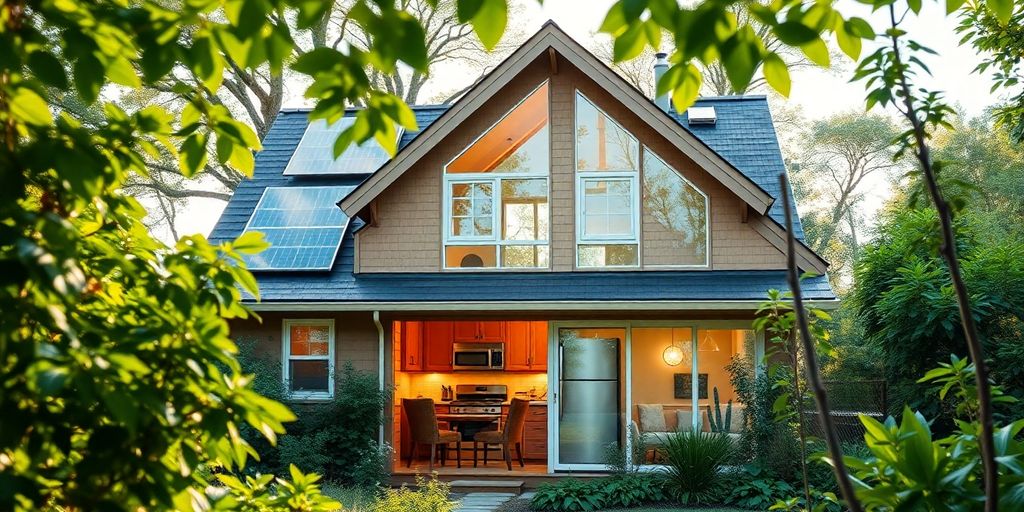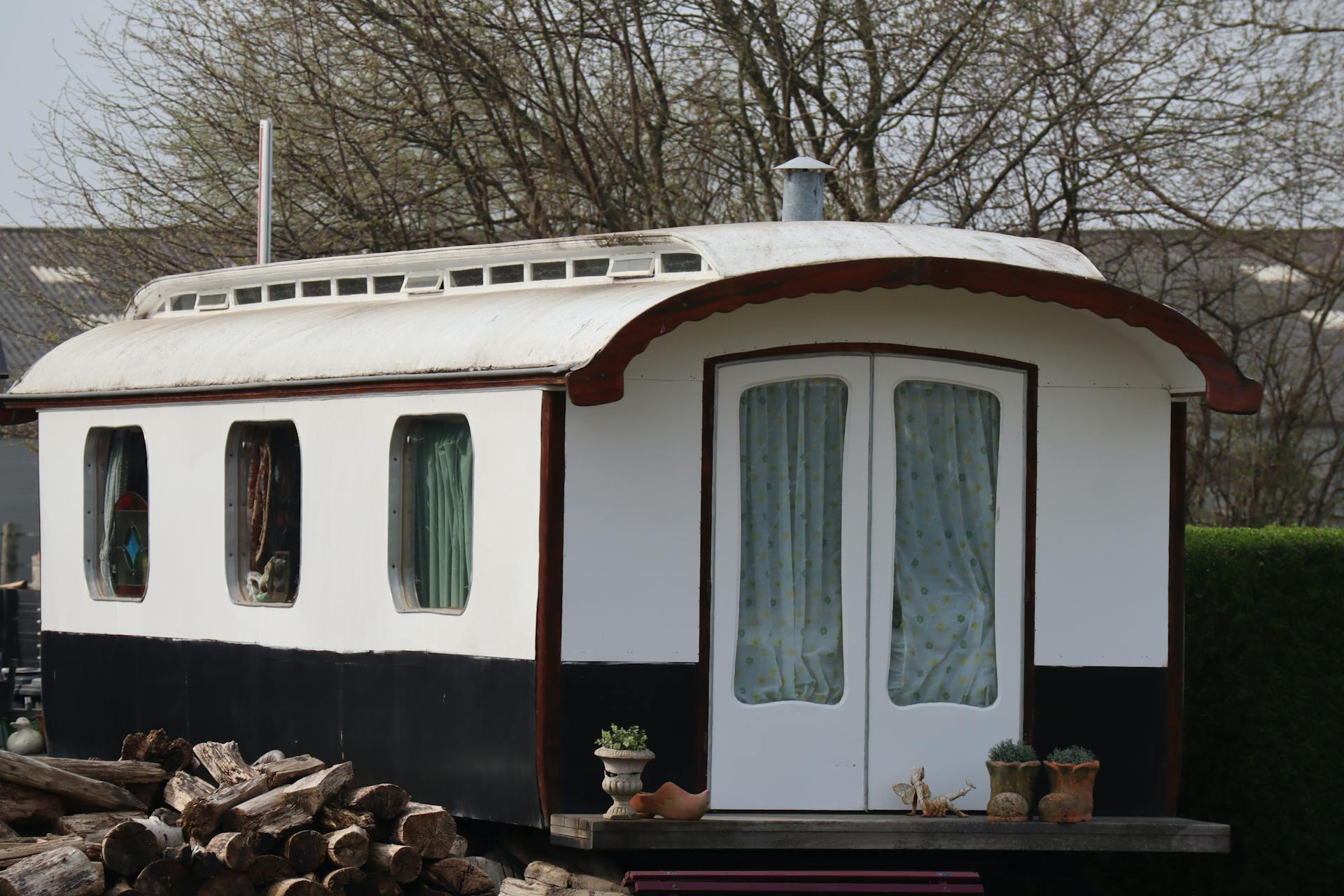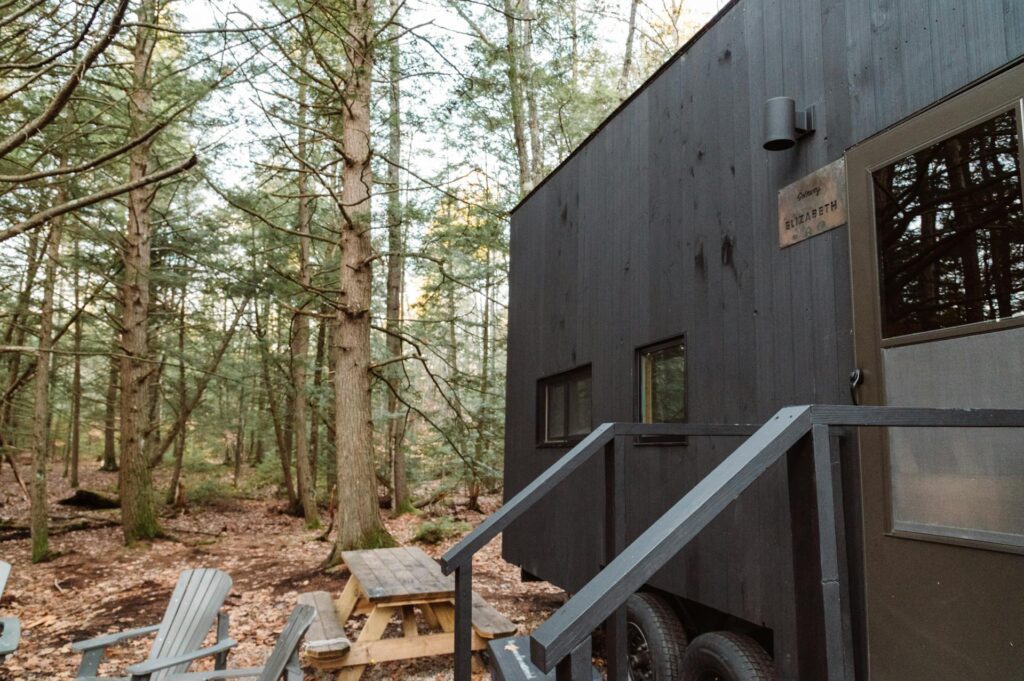
As we transition into November, it’s a great time to think about how to keep your home energy efficient all year long. With rising energy costs and growing concerns about the environment, making your home more energy efficient is not only smart but necessary. This article will explore practical tips to help you create an energy efficient home, covering everything from design features to smart technology.
Key Takeaways
- Incorporate passive design features and optimise insulation for better energy efficiency.
- Upgrade to energy-efficient appliances and consider Energy Star rated options.
- Enhance your home’s insulation and seal any gaps to prevent drafts.
- Explore renewable energy options like solar power to reduce reliance on traditional energy sources.
- Practise energy conservation habits to lower your electricity bills.
Maximising Energy Efficiency Through Design
When you’re building or renovating a tiny home, thinking about energy efficiency from the start can make a huge difference. It’s not just about saving money on bills; it’s about creating a comfortable and sustainable living space. Let’s look at some design strategies that can help.
Incorporating Passive Design Features
Passive design is all about using the natural environment to heat and cool your home. This means considering things like the sun’s path, prevailing winds, and the surrounding landscape. For example, positioning windows to capture the winter sun can provide free heating, while shading them in summer can keep your home cool. Using thermal mass materials like concrete or brick can also help regulate temperature by absorbing and releasing heat slowly. These strategies can significantly reduce your reliance on active heating and cooling systems.
Optimising Orientation and Insulation
How your tiny home faces the sun and wind can have a big impact on its energy performance. In Australia, a north-facing orientation is generally best for capturing winter sun. Proper insulation is also absolutely critical. Think about insulating your walls, roof, and floor to create a thermal barrier that keeps heat in during winter and out during summer. This reduces the amount of energy needed to maintain a comfortable temperature. Here’s a quick rundown:
- Walls: Use high-R value insulation materials
- Roof: Ensure adequate insulation to prevent heat loss in winter and heat gain in summer.
- Floor: Insulate the floor, especially if it’s a concrete slab or if your tiny home is raised off the ground.
Utilising Zoned Heating and Cooling
Zoned heating and cooling allows you to control the temperature in different areas of your tiny home independently. This means you can heat or cool only the rooms you’re using, rather than wasting energy on unoccupied spaces. Mini-split systems are a great option for zoned heating and cooling in tiny homes, as they’re compact, efficient, and can be individually controlled. Programmable thermostats can also help you automate your heating and cooling schedule, ensuring that you’re only using energy when you need it. This approach can lead to significant energy savings and a more comfortable living environment.
By carefully considering these design principles, you can create a tiny home that is not only beautiful and functional but also energy-efficient and sustainable. It’s an investment that will pay off in the long run, both financially and environmentally.
Upgrading Your Home's Appliances
When it comes to tiny home living, every bit of energy saved counts. Upgrading your appliances is a fantastic way to reduce your energy consumption and lower those pesky electricity bills. Let’s explore how to make smart choices when it comes to your home’s appliances.
Choosing Energy-Efficient Models
When it’s time to replace an appliance, take a good look at energy-efficient models. These appliances are designed to use less power, saving you money in the long run. Look for models with high energy ratings – the more stars, the better! Consider what features you really need; do you need the top-of-the-line fridge with all the bells and whistles, or will a simpler, more efficient model do the trick? Sometimes, less is more, especially when it comes to energy use.
Benefits of Energy Star Appliances
Energy Star appliances meet strict guidelines set by the Australian government for energy efficiency. These appliances use less energy than standard models, which translates to lower electricity bills and a smaller carbon footprint. Plus, many Energy Star appliances come with rebates or incentives, making them even more affordable. It’s a win-win situation! Investing in Energy Star appliances is a smart move for your wallet and the environment.
Reducing Energy Consumption with Smart Technology
Smart technology isn’t just about convenience; it can also help you save energy. Smart appliances can learn your habits and adjust their settings to optimise energy use. For example, a smart fridge might adjust its temperature based on how often you open the door, or a smart washing machine might use less water for smaller loads. You can even control some appliances remotely, turning them off when you’re not home. Smart technology can make a real difference in reducing your energy consumption without sacrificing comfort or convenience.
Upgrading your appliances is an investment that pays off in the long run. Not only will you save money on your electricity bills, but you’ll also be doing your part to reduce your environmental impact. So, next time you’re in the market for a new appliance, take the time to research energy-efficient models and make a smart choice for your home and the planet.

Enhancing Insulation for Year-Round Comfort
Importance of Proper Insulation
Okay, let’s talk about insulation. It’s not the most glamorous topic, but trust me, it’s a game-changer when it comes to tiny home maintenance. Think of your home like a cosy esky – insulation is what keeps the cold drinks cold and the hot snags hot (or, you know, your house cool in summer and warm in winter). Good insulation minimises heat transfer, keeping your home comfortable no matter what the weather is doing outside. Without it, you’re basically throwing money out the window (literally, through the gaps!).
Types of Insulation Materials
So, what are your options? There’s a bunch of different types of insulation out there, each with its own pros and cons. Here’s a quick rundown:
- Fibreglass: This is the classic pink stuff. It’s relatively cheap and easy to install, but it can be itchy to work with, so wear gloves and a mask.
- Cellulose: Made from recycled paper, cellulose is an eco-friendly option. It’s also treated to be fire-resistant.
- Spray Foam: This stuff expands to fill every nook and cranny, making it great for sealing gaps. It’s a bit pricier, but it offers excellent insulation.
- Rigid Foam Boards: These are good for insulating walls and roofs. They come in different thicknesses and R-values (which measure how well they insulate).
Choosing the right material depends on your budget, your climate, and how much DIY you’re willing to do.
Sealing Gaps to Prevent Drafts
Even the best insulation won’t do its job if you’ve got gaps and cracks letting air in. Think of it like wearing a woolly jumper with holes in it – you’re still going to feel the cold! Sealing these gaps is crucial for home insulation. Here’s what you need to do:
- Check around windows and doors: Use weather stripping or caulk to seal any gaps.
- Seal around pipes and wires: Use expanding foam to fill any holes where pipes or wires enter your home.
- Inspect your roof: Look for any missing or damaged shingles and repair them promptly.
By sealing these gaps, you’ll not only improve your home’s energy efficiency but also reduce drafts and make your home more comfortable. It’s a simple and effective way to save money on your energy bills and keep your home cool in summer and warm in winter.
Utilising Renewable Energy Sources
Living in a tiny home often means embracing a smaller footprint, and what better way to do that than by tapping into renewable energy? It’s not just about being eco-friendly; it can also save you money in the long run. Plus, many tiny homes are located in areas where grid access might be tricky or expensive, making renewables an even smarter choice. Let’s explore some options.
Benefits of Solar Power
Solar power is probably the first thing that comes to mind when you think about renewable energy, and for good reason. The cost of solar panels has dropped dramatically in recent years, making them more accessible than ever. But what are the real benefits for a tiny home?
- Reduced energy bills: Generating your own electricity means you’re less reliant on the grid, which translates to lower monthly costs.
- Increased property value: A home with solar panels is often more attractive to buyers.
- Environmental benefits: Solar power is clean and sustainable, helping you reduce your carbon footprint.
Plus, in some areas, you can even sell excess energy back to the grid, earning you credits on your bill. It’s a win-win!
Investing in Wind Energy
While solar is super popular, don’t count out wind energy. It might not be suitable for every location, but if you’ve got a decent breeze, it could be a great option. Small-scale wind turbines are available, designed for residential use. They’re not as common as solar panels, but they can be a powerful addition to your renewable energy setup. You can find sustainable granny flats that are designed to incorporate wind energy solutions.
Exploring Other Renewable Options
Solar and wind are the big players, but there are other renewable options to consider, depending on your location and needs:
- Hydro power: If you have a stream or river nearby, micro-hydro systems can generate electricity.
- Geothermal: Geothermal energy taps into the Earth’s natural heat to provide heating and cooling.
- Biomass: Biomass involves burning organic matter, like wood or agricultural waste, to generate heat or electricity. This option requires careful consideration due to environmental concerns.
Choosing the right renewable energy source depends on your specific circumstances. Consider factors like location, climate, budget, and energy needs. It’s always a good idea to consult with a renewable energy expert to determine the best solution for your tiny home.
Implementing Smart Heating and Cooling Solutions
Let’s be real, heating and cooling can be a massive drain on your energy bill, especially in a smaller space. But with a bit of smart thinking, you can keep your tiny home comfy without blowing the budget. How do you do that? Let’s explore some options.
Using Programmable Thermostats
Programmable thermostats are a game-changer. They let you set different temperatures for different times of the day. Think about it: why heat or cool your place when you’re not even there? You can set it to be cosy when you wake up, dial it back while you’re at work, and then warm it up again before you get home. It’s all about being efficient and only using energy when you need it. Plus, many modern thermostats can be controlled via your smartphone, so you can adjust the temperature even when you’re not at home. This is a great way to save on heating and cooling costs.
Benefits of Mini-Split Systems
Mini-split systems, also known as ductless systems, are another excellent option for tiny homes. Unlike traditional ducted systems, mini-splits allow you to heat or cool individual rooms. This is perfect for tiny homes where you might only be using one or two rooms at a time.
Here’s why they’re great:
- Zoned heating and cooling: Only heat or cool the rooms you’re using.
- Energy efficiency: They’re generally more efficient than traditional systems.
- Easy installation: No need for extensive ductwork.
Mini-split systems can be a bit pricier upfront, but the long-term energy savings can definitely make it worth the investment. Plus, they’re super quiet, which is a bonus in a small space.
Natural Ventilation Techniques
Don’t underestimate the power of fresh air! Natural ventilation is a simple and effective way to keep your tiny home cool without using any energy at all. The key is to create cross-ventilation by opening windows and doors on opposite sides of your home. This allows air to flow through, naturally cooling the space. Consider these tips:
- Open windows on opposite sides of the house to create a breeze.
- Use fans to circulate air and enhance ventilation.
- Consider the prevailing wind direction when positioning windows and vents.
By using these smart heating and cooling solutions, you can keep your tiny home comfortable all year round without breaking the bank. It’s all about being mindful of your energy usage and making smart choices that work for your lifestyle.
Practising Energy Conservation Habits
It’s easy to overlook the impact of our daily habits on energy consumption. But in a tiny home, where space and resources are limited, being mindful of how we use energy can make a big difference to your bills and the environment. It’s about adopting simple, consistent practises that collectively lead to significant savings. Let’s explore some easy ways to reduce your energy footprint.
Turning Off Unused Appliances
This might seem obvious, but it’s a habit many of us struggle with. How often do you leave lights on in rooms you’re not using, or leave your TV on standby? Make a conscious effort to switch off lights when you leave a room, and fully power down appliances when they’re not in use. Even on standby, many appliances continue to draw power, contributing to what’s known as ‘phantom load’.
Using Power Strips Effectively
Power strips, or surge protectors, aren’t just for protecting your electronics from power surges; they can also be a great tool for energy conservation. Plug multiple devices into a single power strip, and then switch off the entire strip when you’re not using those devices. This is particularly useful for entertainment systems, home office setups, and kitchen appliances. It eliminates the need to unplug each device individually and ensures that they’re not drawing power unnecessarily. This is a great energy-saving home design tip.
Mindful Energy Usage
Beyond specific actions, cultivating a general awareness of your energy consumption is key. This means being conscious of how long you’re using appliances, whether you really need to turn on the air conditioner, or if you could open a window instead. It’s about making informed choices that prioritise efficiency. For example:
- Take shorter showers. Heating water consumes a lot of energy, so reducing your shower time can lead to significant savings.
- Wash clothes in cold water. Most detergents work just as well in cold water, and you’ll save a considerable amount of energy by not heating the water.
- Only run the dishwasher or washing machine when they’re fully loaded. This maximises the efficiency of each cycle.
By integrating these practises into your daily routine, you’ll not only reduce your energy consumption but also contribute to a more sustainable lifestyle. It’s a win-win for your wallet and the planet. Small changes can lead to big results.
Consider living in a tiny home to reduce your environmental impact. Thinking about sustainable building tips can help you save money in the long run.

Optimising Water Heating and Usage
Water heating can be a real energy hog in any home, even more so in a tiny home where resources are limited. Let’s look at some ways to cut down on water heating costs and usage.
Investing in Tankless Water Heaters
Traditional water heaters constantly heat and store water, which means you’re paying to keep water hot even when you’re not using it. Tankless water heaters, on the other hand, only heat water when you need it. This on-demand system eliminates standby heat loss, saving you money and energy. They’re also more compact, which is a big plus in a tiny home.
Practising Shorter Showers
Okay, this one might seem obvious, but it’s worth mentioning. The less time you spend in the shower, the less hot water you use. Simple as that! Try these tips:
- Set a timer on your phone to keep yourself accountable.
- Try a shower timer that suctions to the wall.
- Consider a low-flow showerhead to reduce water usage without sacrificing pressure.
Shortening your showers is a simple way to save water and energy. Even shaving a minute or two off your usual shower time can make a difference over the long run.
Using Cold Water for Laundry
Heating water for laundry can really add to your electricity bill. Most modern detergents are designed to work just as well in cold water, so there’s really no need to use hot water unless you’re dealing with heavily soiled items. Switching to cold water for laundry is an easy way to save energy and money, and it’s also gentler on your clothes, helping them last longer. You can save up to 60% of your energy by turning down the temperature of your laundry!
Choosing Energy-Efficient Windows and Doors
Windows and doors might not be the first thing you think about when considering energy efficient home improvements, but they play a massive role in how well your home retains heat in winter and stays cool in summer. Upgrading to energy-efficient options can significantly reduce your energy bills and improve your overall comfort. Let’s explore how to make the right choices.
Understanding Insulation Values
When shopping for windows and doors, you’ll come across terms like U-value and R-value. These ratings indicate how well a window or door insulates. U-value measures how much heat passes through the window (lower is better), while R-value measures resistance to heat flow (higher is better). Pay close attention to these values to ensure you’re selecting products that offer optimal insulation for your climate. Different climates will require different insulation values, so do your research to find out what’s best for your area.
Benefits of Double Glazing
Double-glazed windows feature two panes of glass with a gap in between, often filled with an inert gas like argon. This creates an extra layer of insulation, reducing heat transfer and improving energy efficiency. Double glazing can significantly reduce condensation build-up on windows, which can lead to mould growth. It also helps to reduce outside noise, making your home quieter and more comfortable. If you’re wondering, “what makes a house energy efficient?“, double glazing is a great start.
Sealing Windows and Doors for Efficiency
Even the most energy-efficient windows and doors won’t perform well if they’re not properly sealed. Gaps and cracks around frames can let in drafts, wasting energy and making your home uncomfortable. Here’s how to seal them effectively:
- Caulking: Use caulk to seal gaps between the window or door frame and the wall. Choose a high-quality caulk that’s designed for exterior use and is paintable.
- Weatherstripping: Apply weatherstripping around the edges of the window or door to create a tight seal when it’s closed. Replace worn or damaged weatherstripping regularly.
- Door Sweeps: Install a door sweep at the bottom of exterior doors to prevent drafts from entering under the door. Make sure the sweep fits snugly against the threshold.
By choosing energy-efficient windows and doors and sealing them properly, you can create a more comfortable and energy-efficient home. These upgrades can save you money on your energy bills and reduce your carbon footprint, making your home more sustainable.
When picking windows and doors for your home, it’s smart to choose ones that save energy. Energy-efficient options help keep your home warm in winter and cool in summer, which can lower your power bills. Plus, they are better for the environment! If you want to learn more about how to select the best energy-efficient windows and doors for your home, visit our website today!
Wrapping It Up: Your Path to Energy Efficiency
So there you have it—some straightforward tips to help you keep your home energy-efficient all year round. It’s all about making small changes that can lead to big savings on your bills and a lighter footprint on the planet. From upgrading to energy-efficient appliances to being mindful of your heating and cooling, every little bit counts. Remember, it’s not just about saving money; it’s about creating a comfortable living space that aligns with your values. With a bit of effort and planning, you can enjoy a cosy home while doing your part for the environment. Let’s make energy efficiency a part of our everyday lives!
Frequently Asked Questions
What are passive design features?
Passive design features are ways to use natural elements like sunlight and wind to keep your home comfortable without using extra energy. This includes things like the way your house is positioned and how well it is insulated.
How can I tell if an appliance is energy-efficient?
Look for the Energy Star label. This label means the appliance meets strict energy efficiency guidelines and will use less power than regular models.
What is the best way to insulate my home?
Good insulation keeps your home warm in winter and cool in summer. You can use materials like foam boards, fibreglass, or spray foam. Make sure to seal any gaps to stop drafts.
Why should I consider solar panels?
Solar panels can help you save money on electricity bills by using sunlight to generate power. They can also lower your carbon footprint by reducing reliance on fossil fuels.
What are some good habits to save energy?
You can save energy by turning off lights when you leave a room, unplugging devices when not in use, and using power strips to easily switch off multiple devices at once.
How can I reduce my water heating costs?
Consider getting a tankless water heater, which heats water only when you need it. Also, try taking shorter showers and washing clothes in cold water to save energy.
